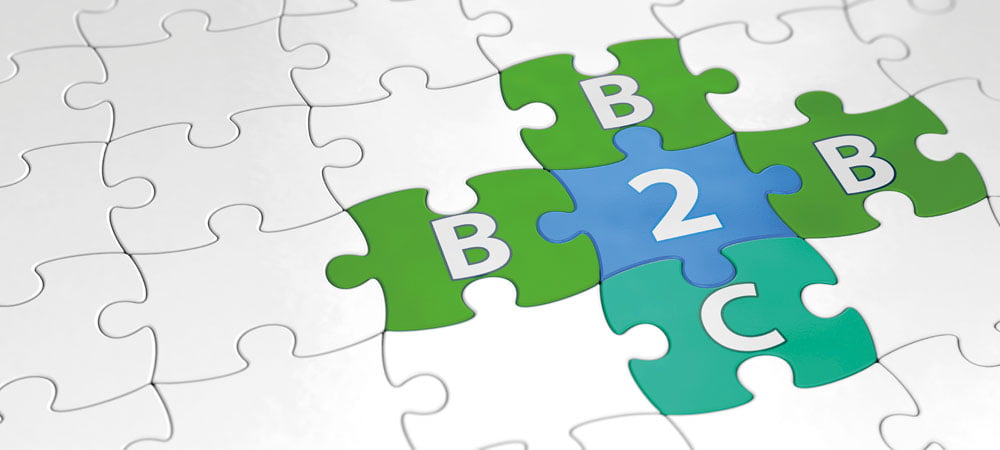Customer Centric


Electromobility is booming. According to the Federal Motor Transport Authority, more than one in five new cars already rolls off the dealer's lot electric or as plug-in hybrids. The steadily growing demand for electric cars presents infrastructure operators with major challenges. This is also the case for a young medium-sized company in the field of charging infrastructure, whose core business is the networking and provision of charging solutions. As a white-label provider, the company's customers have so far primarily included large car manufacturers, who operate their in-house charging services via the platform provided (B2B2C). Business with end customers (B2C) and services for fleet customers (B2B), on the other hand, is still in its infancy, but enormous growth is expected in this sector in the near future.
SW tools for E2E
In order for the still young company to cope with the predicted multiplication of its customers in the coming years, all existing processes, tools used and the entire organization must be scrutinized from the ground up. Result: Without a software-supported, systemic realignment, the challenges of the future cannot be met. The prerequisite for the upcoming reform of the operational level is the establishment of structured, tool-based end-to-end process support that takes into account the various requirements and dependencies of the B2B, B2C and B2B2C business.
Although the restructuring is based on best practices for the analysis of relevant capabilities along the customer lifecycle and the derivation of tailored implementation scenarios or application architectures, the individual challenges are manifold. The lack of industry standards and experience within the company has a direct impact on existing processes, the organization and the tools used: While the teams were formed and reshaped within the previous year on the basis of business cases, the classic departmental silos often persist in the minds of the employees. Unstructured documentation and hardly any transparency in securing and passing on information in the past were the result.
On the technical side, there are numerous manually driven processes and workarounds. While these fulfill the expected functions, they are neither particularly efficient nor sustainable or stable. In addition, a large number of these processes are built around the core application or are even directly integrated there. As a result, changes are very often associated with high effort and the core application regularly has to deal with overload. As a result, synchronizing business-critical information with third-party systems takes hours instead of minutes.
Solving the problems and challenges identified is all the more pressing in view of the upcoming development of the young company. For the business case to work out in the long term, there must be the potential to handle a significant increase in customer volume in the B2C business. This is an impossible task for the existing systems and processes. During the problem or needs analysis, it quickly becomes clear that the focus in the near future must be on the central element of the internally networked company. Since the sales and account managers only serve business customers (B2B and B2B2C) and the end customers (B2C) are primarily acquired through marketing or via the B2B2C customers, the processes must be divided up and intersections identified.
Lead-to-Cash
In addition, it is crucial to set up integrative processes at an early stage that enable all stakeholders to better manage their tasks and make more informed decisions based on relevant information. This means that core and support processes are not only tailored to the requirements of sales, but the needs and capabilities of those responsible in the lead-to-cash process, finance and IT, and the procure-to-pay process are also analyzed and evaluated.
After a detailed analysis of the requirements, a platform solution consisting of a combination of SAP Sales Cloud and SAP Emarsys prevailed. The Sales Cloud is particularly convincing due to its good integration into the existing S/4. Emarsys scores with user-friendliness and extensive possibilities in the area of automation and individualization of customer engagement campaigns.
As with any implementation, the integration of third-party systems is the key challenge in this case. The Relational Data Service from Emarsys contributes to solving this problem. This enables the flexible integration of external databases and allows the creation and application of continuously new evaluations in the area of data intelligence. A direct data import into Emarsys or the active sending of data to the customer engagement platform is therefore not necessary. In this way, individual campaigns based on behavior analytics can be triggered almost in real time.
Microservices and Cloud
In the area of profile data and corresponding consent information, the exchange with Emarsys is carried out via microservices with the relevant systems. This allows a clear separation of static and dynamic data and reduces the load on additional systems. In addition, this approach allows trigger-driven application information to be handled by a dedicated dispatch solution, reducing the load on the existing core system. The Sales Cloud is set up so that customer data is synchronized directly with the ERP as soon as it is designated as such in the CRM. This creates a uniform data basis that greatly reduces the workload in both Sales and Finance.
Reporting can now be based on the sales tunnel as well as on billing and payment data. Since the SD module in S/4 is also being set up in parallel with the project, the centrally managed material master data can also be used to create quotations, which are in turn transferred directly to S/4 for billing upon completion.
With the enormous growth of the e-mobility industry, the requirements in the sourcing area are increasing in direct proportion. It is therefore obvious to map part of the procure-to-pay process (acquisition, documentation, maintenance of partnerships) directly in CRM. In this way, the integration with the ERP can be used and synergies created between the O2C and P2P processes, which frees up further capacities in the area of accounting.
Digital transformation and customer centricity are the order of the day in online business. In the context here, one component does not act as a means to the end of the other; rather, it is a reciprocal system. Growth requires digitization, digitization enables growth. Progressive customer centricity increases efficiency and, at the same time, customer satisfaction. This in turn generates growth. Against the backdrop of projected growth rates, the start-up from this case study has created scalability. By implementing integrated end-to-end process support, it was able to replace manual processes, break down classic silo structures and eliminate superfluous workarounds.
The company is now able to map and monitor the entire customer lifecycles of business and private customers. With the help of data intelligence, individualized campaigns can now be launched. In addition, better networking is ensured. This ensures transparency and facilitates the transfer of information: Processes in product management, sales and accounting now mesh better. All this makes it possible to provide B2B, B2B2C, and B2C customers, all of whom are interdependent, with information and action in a timely manner and as comprehensively as possible.





